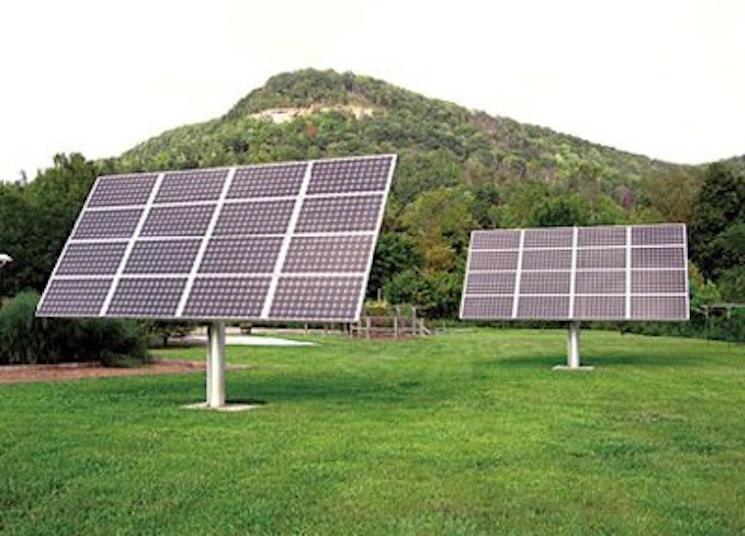February 28, 2014

Hawaii, California, Kentucky, Texas and New York Prime Candidates to Disrupt Existing Utility Business Models
Snowmass, Colo. — Feb. 25, 2014 — Today, Rocky Mountain Institute (RMI), HOMER Energy and CohnReznick Think Energy (CRTE) released a report detailing the potential for appreciable customer defection from the electric grid in major markets by 2025, without incurring higher costs or lower reliability. The report details that, as the hybrid combination of solar photovoltaic and battery storage become cost competitive with retail grid electricity rates, migration of customers away from the grid could happen well within the 30-year planned economic life of typical utility investments such as central thermal generation plants and transmission infrastructure.
In the first installment of two reports, RMI, HOMER and CRTE detail the possible scenarios in five different U.S. regions—Hawaii, California, Kentucky, Texas and New York—and identify when solar PV and storage combinations could disrupt existing utility business models. The continuing decline of solar PV and battery storage costs, coupled with increasing retail electricity prices, has resulted in grid parity today for commercial customers in Hawaii. The most optimistic projections, based on certain solar and efficiency targets being met, depict grid parity for millions of residential and commercial customers in New York and California within this decade.
Key takeaways from the report include:
• A considerable number of utility customers will likely see favorable defection economics within 10 years
• Utilities will likely experience significant revenue decay before defection
• The likelihood of favorable long-term customer defection signals the eventual demise of traditional utility regulatory models
“Solar-plus-storage represents a fundamentally new paradigm,” said RMI Managing Director Jon Creyts, PhD. “While other distributed generation options still require some degree of grid dependence, solar-plus-storage provides an opportunity for customers to cut the cord to their utility entirely. To remain competitive, utilities need to understand how to leverage hybrid systems within the electricity system.”
Even before total grid defection becomes a reality, utilities will see further revenue decline since solar-plus-battery systems sized to meet most of a customer’s load will become cost effective sooner. In addition, other motivating factors such as customer desire for increased power reliability and low-carbon electricity generation are driving early adopters ahead of grid parity.
“To best compete, property owners and developers will need to understand how distributed generation and storage is rapidly changing energy economics,” said CRTE Founder and President Mark Crowdis. “By assessing the impact of these new technologies and the innovative contracting approaches that support them, property owners can be at the leading edge of this new market, ensuring long term financial savings for their properties.”
The second installment of the report will offer solutions for how utilities might rethink the “threat” of such hybrid resources and unlock opportunities through new business models—within existing regulatory frameworks or under an evolved regulatory landscape—to better capture the value of distributed resources.
“As storage and control technologies improve, we have the opportunity to incorporate more and more renewable energy sources into the grid in a way that balances and optimizes those power sources,” said HOMER Energy CEO Peter Lilienthal, PhD. “Properly regulated, these hybrid technologies can be a benefit to the larger grid, rather than a threat as they are sometimes depicted.”
About Rocky Mountain Institute
Since 1982, Rocky Mountain Institute has advanced market-based solutions that transform global energy use to create a clean, prosperous and secure future. An independent, nonprofit think-and-do tank, RMI engages with businesses, communities and institutions to accelerate and scale replicable solutions that drive the cost-effective shift from fossil fuels to efficiency and renewables. Please visit www.rmi.org for more information.
About HOMER Energy
HOMER Energy (Hybrid Optimization of Multiple Energy Resources) is the world’s leading microgrid modeling software company. Microgrids, or independent energy systems providing grid backup or off-grid power, are in increasing demand because of the rising cost of diesel fuel, decreasing cost of renewables, and the need for more reliable power. HOMER navigates the complexities of building cost effective and reliable microgrids that combine traditionally generated and renewable power, storage, and load management. HOMER is widely recognized as the industry standard by leaders including Navigant Research, the U.S. Department of Defense, the World Bank, and its over 100,000 users in 198 countries. For more information, visit www.homerenergy.com.
About CohnReznick Think Energy
CRTE is a consulting firm focusing on renewable energy generation. The firm assists project developers, financiers, governmental organizations, consumers and generators of renewable power. Since CRTE was founded in 2000, it has been supporting clients interested in acquiring on-site renewable energy systems, developing renewable energy projects, purchasing and selling electricity and renewable energy credits (RECs), expanding and improving their renewable energy businesses and technologies, and investing in renewable energy projects and businesses. Working alongside CohnReznick and Reznick Capital Markets Securities, CRTE offers one of the most comprehensive project advisory platforms in the industry. CRTE has assembled a team experienced in economic, financial, and policy analysis; project management; engineering; technology and resource evaluation; and project feasibility studies.




